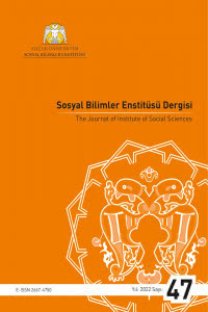BÜTÇE AÇIĞI - CARİ İŞLEMLER AÇIĞI ARASINDAKİ İLİŞKİ: TÜRKİYE ÖRNEĞİ 1992-2003
Bu çalışma ile bütçe ve cari işlem açıklarıarasındaki nedensellik ilişkisi ve nedenselliğin yönü Türkiye için araştırılmaktadır. Keynesyen görüşiki açık arasında ilişki olduğunu kabul ederken Ricardocu Eşitlik Hipotezi bunu reddetmektedir. 1992 – 2003 aylık verilerinden hareketle bu hipotezlerden hangisinin geçerli olduğu Granger nedensellik testi ve regresyon analizi yardımıyla sınanmaktadır. Analiz sonuçlarıTürkiye’de ele alınan dönem itibariyle iki açık arasında karşılıklıilişki bulunduğunu dolayısıyla Keynesyen Görüşün geçerli olduğunu yansıtmaktadır.
Anahtar Kelimeler:
Bütçe açığı, Cari işlemler açığı, İkiz açık
Throught this article relation causality and its direction between budget and current account deficits has been studied. While Keynesian view accepts this relation, Ricardian equivalence hypothesis rejects it. In order to confirm which of these hypothesis are valid, they’re analyzed with Granger causality test and regression analysis based on 1992-2003 monthly data. The result of analysis has proven validity of Keynesian view indicating reciprocal relation between two deficits for covering years in Turkey
Keywords:
Budget deficit, Current account deficit, Twin deficits,
___
- Akbostancı, E., Tunç, G. İ. (2002), “Turkish Twin Deficits: An Error Correction Model of Trade Balance”, ERC Working Papers in Economics 01/06.
- Alkswani, (2001), http://www.mafhoum.com/press2/79E15.pdf
- Bachman, D. D. (1992), “Why is the US Current Account Deficit So Large? Evidence From Vector Autoregressions”, Southern Economic Journal, 59, 232-240.
- Bahmani-Oskooee, Mohsen (1989), “Effects of the US Government Budget on its Current Account: An Empirical Inquiry”, Quarterly Review of Economics and Business, 29, 76-91
- Bilgili, E., Bilgili F. (1998), “Bütçe Açığının Cari İşlemler Dengesi Üzerindeki Etkileri: Teori ve Uygulama”, İktisat İşletme ve Finans.
- Colander, D. C. (1998), Macroeconomics, Irwin McGraw-Hill, Boston.
- Enders, W. and Lee, B. S. (1990), “Current Account and Budget Deficits: Twins or Distant Cousins?”, The Review of Economics and Statistics, 72, 373-381.
- Froyen, Richard T. (1999), Macroeconomics Theories and Policies, Sixth Edition, Prentice Hall Inc., New Jersey.
- Khalid, A. M., Guan, T. W. (1999), “Causality Tests of Budget and Current Account Deficits: Cross-country Comparisons”, Empirical Economics, 24, 389-402.
- Latif-Zaman, N., DaCosta, M. N. (1990), “The Budget Deficit and The Trade Deficit: Insights Into This Relationship”, Eastern Economic Journal: 16, 349-354.
- Lipsey, Richard G. vd. (1999), Economics, Twelfth Edition, Addison-Wesley Publishing Company, United States.
- Parkin, Michael (2000), Economics, Fifth Edition, Addison-Wesley Publishing Company, United States.
- Pattichis, Charalambos (2004), “Budget and Trade Deficits in Lebanon”, Applied Economics Letters, 11, 105-108.
- Vamvoukas, George A. (1999), “The Twin Deficits Phenomenon: Evidence from Greece”, Applied Economics, 31, 1093-1100.
- Zengin, Ahmet (2000), “The Twin Deficits Hypothesis (The Turkish Case)”, First International Joint Symposium On Business Administration, Gökçeada- Çanakkale.
- ISSN: 1302-1796
- Yayın Aralığı: Yılda 3 Sayı
- Başlangıç: 1992
- Yayıncı: Melikşah Aydın
Sayıdaki Diğer Makaleler
Turan PAKSOY, Fulya ALTIPARMAK
Sosyal Güvenlik Hukukunda İsteğe Bağlı Sigortalılık
ARŞİV KAYITLARINA GÖRE KONYA MAHKEME HAMAMI HAMAM-I CEDÎD,YENİHAMAM
GLOBAL KAMUSAL MALLARIN FİNANSMAN ARACI OLARAK GLOBAL VERGİ ÖNERİLERİ
Çeviride Eşdeğerlik ve Çeviri Kuramları Bağlamında Karşılaştırmalı Bir Çalışma
SOSYAL GÜVENLİK HUKUKUNDA İSTEĞE BAĞLI SİGORTALILIK
Organizasyonlarda Ölçek Küçültme ve Ölçek Küçültme Çalışmalarında Önem Taşıyan Unsurlar
